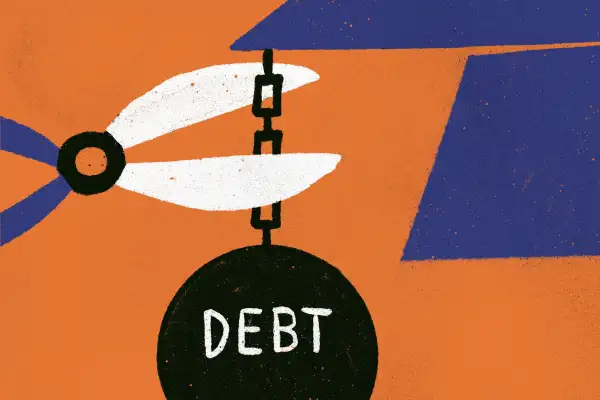Student Loan Forgiveness Is Blocked Again: 5 Key Updates Amid the Legal Chaos

A group of Republican-led states has thrown another wrench in the Biden administration's attempts to reform the federal student loan system.
On Thursday, a federal court in Georgia temporarily blocked President Biden's latest effort to broadly forgive student loans, which was slated to cancel an estimated $150 billion of student loan debt starting as early as this fall.
Seven Republican-led states requested the injunction in a lawsuit filed Tuesday. The development marks the latest in a flurry of legal challenges, rulings and administrative policy changes that have left millions of borrowers in the lurch.
“Borrowers are rightfully confused by the abrupt changes to their student loan options, and have limited access to quality assistance in navigating the changes,” student debt advocates wrote to the Department of Education in a recent letter.
The bulk of the recent changes affect two major Biden administration programs: Biden’s $150 billion “Plan B” student loan forgiveness program and an overhauled income-driven repayment plan called Saving on a Valuable Education, or SAVE. Both are now on hold.
Despite conservative efforts to limit executive action on debt relief, the Biden administration has already canceled about $170 billion of student debt for over 4.5 million borrowers through a variety of existing policies and new relief efforts.
Here’s a look at where measures to provide additional student debt relief stand after a tumultuous summer.
Broad forgiveness faces fresh legal challenge
The federal court injunction issued Thursday temporarily halts the Biden administration's new relief program before it even got up and running. Dubbed "Plan B," it was the administration's second — though much narrower — attempt at broad student loan forgiveness, after the first attempt was struck down by the U.S. Supreme Court last June.
The new plan, which underwent an official rulemaking process and uses separate legal justification from the failed forgiveness attempt, aims to wipe out $150 billion of student loans for millions of borrowers with specific situations like runaway interest, financial hardship or remaining loan balances after paying down their student loans for more than two decades.
The department is still nailing down the details, with plans to issue a final rule in the coming weeks. In the meantime, the Education Department already began emailing borrowers in August to highlight the upcoming forgiveness efforts, which were expected to begin as early as this fall. The temporary injunction bars any forgiveness or interest waivers under the plan from going into effect for at least 14 days, and a hearing is scheduled for Sept. 18.
The seven states suing to stop the relief include Missouri, Georgia, Alabama, Arkansas, Florida, North Dakota and Ohio.
Supreme Court weighs in on SAVE repayment plan (sort of)
The Supreme Court isn't going to clear (or block) the path for the Biden administration to fully roll out its new SAVE plan benefits — at least for now.
As background, Biden introduced the plan last fall, when borrowers were returning to repayment after a three-and-half-year-long pause. With lower monthly payments and a shorter repayment timeline, the new income-driven repayment (IDR) plan is far more generous than any other IDR plan before it.
About 8 million borrowers are enrolled in SAVE. More than half of them have had their monthly payments set to $0 and over 400,000 other borrowers have had their loans completely forgiven under the new repayment timeline, which calls for canceling debt after making at least 10 years of qualifying payments.
In June, two separate federal judges in Kansas and Missouri issued injunctions that halted key parts of the SAVE plan while the challenges play out in court. The two lawsuits filed in June eventually led to a new injunction that temporarily blocked the entire SAVE plan during litigation.
The Biden administration then appealed the newly expanded injunction to the Supreme Court. Last week, the court weighed in by declining to lift the injunction, meaning the SAVE plan will stay on ice as the plan’s fate gets determined by the lower courts.
After the lower courts rule, it's possible the case could go back before the Supreme Court if the decision is appealed.
Education Department renews forbearance for borrowers already in SAVE
More than 8 million borrowers enrolled in SAVE are still in forbearance, with paused payments and no interest accruing, as the litigation continues. The Biden administration initially put those borrowers in forbearance back in June, due to uncertainty around the legal challenges.
Unfortunately for borrowers, time spent in this general forbearance won't count toward borrowers’ payment history for Public Service Loan Forgiveness or forgiveness on any income-driven repayment plan, the department says.
Additionally, the court injunction froze online applications for all IDR plans, not just SAVE, as well as for federal loan consolidation. Now, borrowers can only apply by submitting a PDF application and sending it to the corresponding servicer.
Even though borrowers can apply via PDF, no new applicants will be enrolled. Currently, servicers have paused processing applications and may place new applicants into an administrative forbearance for up to 60 days. During this type of forbearance, interest does accrue on the loans. However, if application processing takes longer than 60 days, the applicant moves to general forbearance, where interest will then stop accruing.
“Borrowers should expect a lengthy delay in processing,” the Education Department said.
Harsh consequences of missed payments slated to return
Protections aimed at easing borrowers back into repayment over the past year are about to expire.
The student loan "on ramp," which the Biden administration put into place last October, blunts the worst financial consequences of missing a loan payment. Throughout the on ramp, the Education Department hasn’t been placing the loans of borrowers who missed payments into default or delinquent status. The department also hasn’t reported missed payments to credit bureaus or debt collection agencies. In effect, missing a payment during the on ramp has little to no effect on a borrowers’ finances, aside from accrued interest.
That leniency is ending on Sept. 30. After which, “the hammer really comes down,” on borrowers who miss payments, Abby Shafroth, director of the National Consumer Law Center’s student loan borrower assistance project, previously told Money.
The NCLC and other advocate groups have asked the department to lengthen the on ramp until all of the dust settles from the legal battles.
“To protect borrowers, the Department should, at minimum, extend the current ‘on-ramp’ protections to hold student loan borrowers harmless for missed payments as long as the litigation remains active,” the letter, sent at the end of August, states.
The department has yet to release new guidance about the end of the on-ramp.
The timeline for legal fight extends past election
When all of the legal challenges to the Biden administration’s student loan relief plans might conclude is anyone’s guess. Federal court cases can take anywhere from several months to potentially years.
For example, Biden’s initial forgiveness plan was first challenged in September 2022 in federal court before being taken up by the Supreme Court. The death blow didn’t come until June 2023.
If SAVE or Biden’s second forgiveness plan, or both, are appealed to the Supreme Court, the earliest the court would likely release its opinion ruling would be next June or July, when the nation's top court customarily releases decisions on high-profile cases under its purview. The cases even reaching that point highly depend on the outcome of the presidential election.
While the timeline is hard to predict, it's unlikely the legal challenges will be resolved before November, as Republicans opposed to student loan relief are poised for a fight.
“We successfully halted their first two illegal student loan cancellation schemes,” Missouri Attorney General Andrew Bailey said Tuesday. His state is among the ones suing to stop Biden’s latest broad forgiveness plan.
“I have no doubt we will secure yet another win to block the third one,” he added.
More from Money:
How to Pay Off Student Loans Fast
Nearly 60% of College Students Have Considered Dropping Out Because of Money
An 'Affordable' College Degree Now Means Not Going Into Debt, According to Parents






